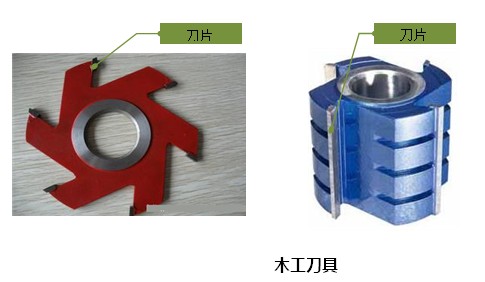Tool detection equipment urgently needed to be updated
 China is the world's most promising tool market. According to the data provided by the China Machine Tool Industry Association Tool Branch, the total amount of tool consumption in the domestic market reached a record high of RMB 40 billion in 2011. Many multinational cutting tool groups have expanded in China. Tool sales are the first choice, currently China's imported tools account for about 1/3 of the total market, and all are modern and efficient tools. Among the homemade tools, only 10% to 15% of modern efficient tools are available. This shows that while China has become the world's most promising tool market, the high-end market is occupied by multinational companies and the development of domestic tools is a long way to go. Nowadays, there are serious drawbacks in the quality inspection of the tool industry in China, and the testing equipment for domestic high-hardness material tools is in urgent need of updating.
China is the world's most promising tool market. According to the data provided by the China Machine Tool Industry Association Tool Branch, the total amount of tool consumption in the domestic market reached a record high of RMB 40 billion in 2011. Many multinational cutting tool groups have expanded in China. Tool sales are the first choice, currently China's imported tools account for about 1/3 of the total market, and all are modern and efficient tools. Among the homemade tools, only 10% to 15% of modern efficient tools are available. This shows that while China has become the world's most promising tool market, the high-end market is occupied by multinational companies and the development of domestic tools is a long way to go. Nowadays, there are serious drawbacks in the quality inspection of the tool industry in China, and the testing equipment for domestic high-hardness material tools is in urgent need of updating. The tool is a tool used for machining in the manufacture of machinery, and is mainly divided into metal cutting tools, woodworking tools, stone cutting tools, etc., used in metallurgy, electronics, hardware, paper, plastics, food, wood, rubber, textile and other fields. Among them, high-hardness material tools have become the mainstream, also known as "superhard material tools." Generally, high hardness tool materials must have high temperature hardness and wear resistance, necessary bending strength and impact toughness. Therefore, the tool material is generally high speed steel, hard alloy, cermet, ceramic or diamond.
China's resources for cutting tool materials are unique. According to the distribution area, tool manufacturers are concentrated in the middle and lower reaches of the Yangtze River, the Pearl River Delta and other places. With the arrival of the national "Twelfth Five-Year Plan" period, the domestic production of high-hardness materials and tools continues to increase, but there is still a large gap between the quality and foreign imports. With the increasingly fierce market competition, China's high-hardness materials and tools need corresponding technological innovation during the entire quality inspection process. The main approach to technological innovation is to reduce the number of people, use equipment to replace labor, change the single parameter measurement to comprehensive parameter measurement, and change it manually. The material is automatically fed and integrated with the entire production line. The automatic production, automatic assembly, automatic logistics, and automatic inspection lines are combined to reduce the high-cost link of the material on-line and off-line. Such a production line equipment needs automatic industrial control. equipment.
As with the machine tool, the customer purchases the tool, not only needs the tool itself, moreover needs to achieve the perfect cutting request, therefore the blade quality directly affects the passing rate of the cutting product. The blade is the cutting part of the tool, and is fixed to the tool holder by screws or welding, and the cutting is completed at a high speed rotation to process the desired shape of the material. The blade production has high requirements on dimensions, hardness and wear resistance, and its quality determines the overall quality of the tool. During the entire production process, the blade detection focuses on bending deformation and thickness difference, ie flatness detection and dimensional inspection. Nowadays, there are many detection methods for the blades, such as contact displacement sensors, laser sensors, machine vision, etc. However, currently the detection of blades in the country generally uses manual detection, that is, the detection of size and appearance defects through the naked eye, not only the high labor cost, but also can not guarantee the inspection. quality.
As an advocate of domestic custom testing, recently, Beijing Leader State Instrument Technology Co., Ltd. has developed a "blade automatic detection equipment program." The inspection system can complete the detection of thickness, thickness deviation, length, width, flat bending deformation and side bending deformation of cemented carbide inserts. In addition, the slightly adjusted solution equipment can also be applied to the detection of other blades and long strips.
Dr. Cui Zhongwei, general manager of Beijing Cong Bang Instrument Co., Ltd., said that the detection equipment needed by users is an intelligent and automated testing equipment that can automatically and quickly filter the pros and cons. This will help blade manufacturers control quality, increase efficiency, reduce costs, and create profits. The blade detection equipment of Connaught instruments overcomes the disadvantages of current manual inspections that are not standardized, solves problems such as inefficiency, and helps toolmakers improve their international competitiveness.
Clear Flat bag is made from Food Grade Virgin material. environmentally friendly and hygienic. They are water-proof, Moisture-proof, strong toughness, tear resistance, good for storage and usually for packing sugar, biscuits, candy, coffee bin, fruits , drinks or other foods. Normally width from 3 inch to 12 inch. Length from 7 inch to 22 inch. Material could be in HDPE or LDPE.

Clear Flat Bags, Polyethylene Flat Bags, Clear Flat Polyethylene Bag, Side Seal Bag, Clear Bag, Crystal Clear Side Gussets Bags
BILLION PLASTIC MANUFACTURING CO.,LTD, JIANGMEN , https://www.jmtrashbag.com